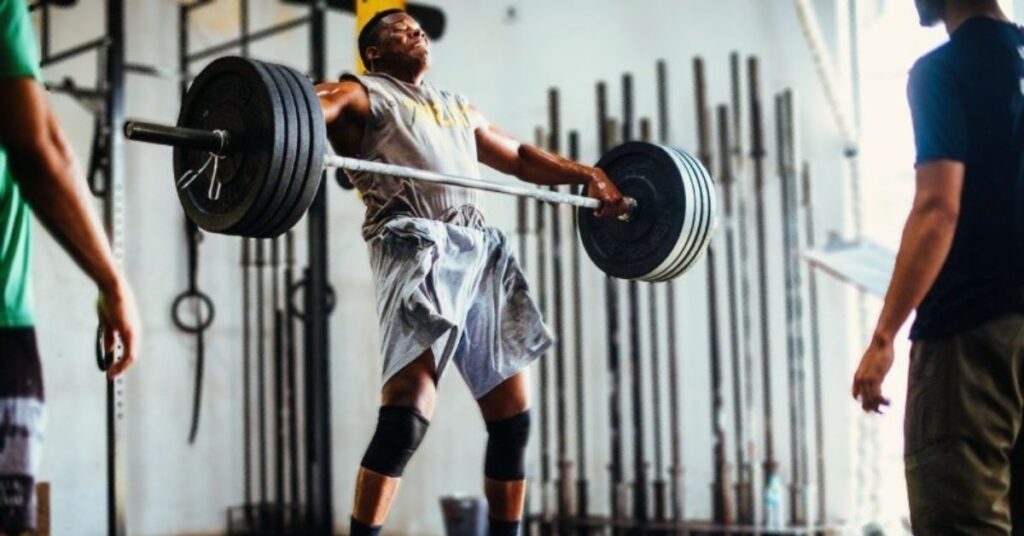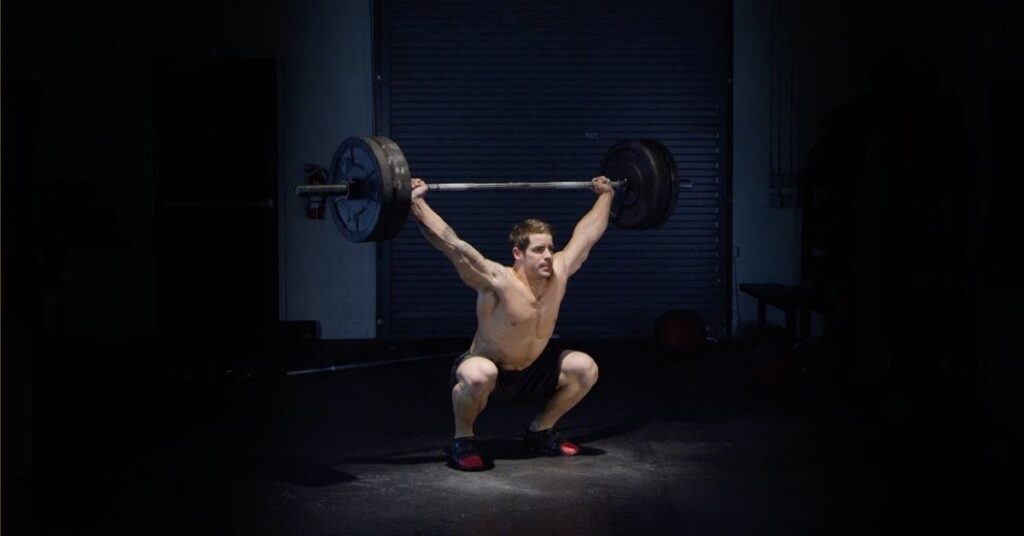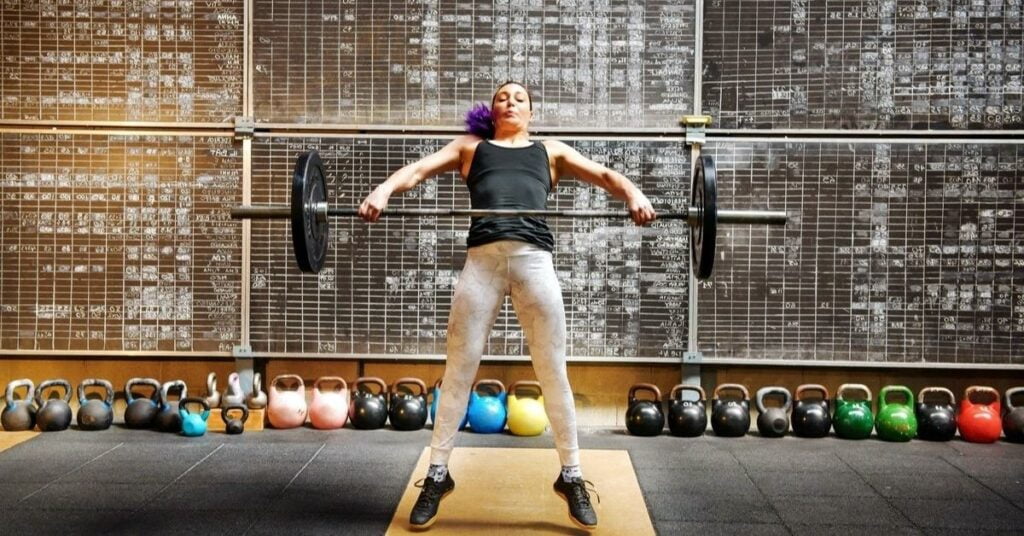
Squat Snatch: The Challenging Olympic Lift You Need to Try
The snatch is a popular movement in Olympic weightlifting and CrossFit.
It can also be used for sports performance training and fitness.
Some athletes/lifters may not understand the terms snatch or full snatch, depending on their coaching background.
This article will explain how a squat snatch differs from power snatches (and snatch/total).
The snatch usually refers to a lifter receiving the barbell in a full squat.
However, coaches and athletes may also use “squat snatch” or full-snatch.
While the squat-snatch is similar to a snatch, some functional fitness WODs may add “squat” for clarification.
Here is an example of a full snatch, also known as a “squat snatch.”
Squat Snatch vs. Snatch

Although there is no distinction between a squat snatch or a snatch in weightlifting, some coaches and athletes may use them interchangeably.
The snatch is used in Olympic weightlifting to denote that the lifter holds the load overhead while fully squatted.
Non-Olympic weightlifting circles may use the term “squat snatch” to indicate that the lifter cannot power snatch the loads.
*It is not uncommon for lifters who are less skilled in Olympic weightlifting techniques to power snatch more often than they can full snatch/snatch/squat.
Squat Snatch vs. Power Snatch
The difference between squat and power snatch is precisely the same as between a snatch or a power grab.
The power snatch is where a lifter takes the barbell off the ground and places it in an overhead squat position.
However, the barbell will be pulled parallel to the floor.
Below, we’ll discuss two differences between the squat-snatch (or simply the full snatch) and the power snatch.
Power Snatch: Increased Pulling Strength

The power snatch is a lifting technique requiring the lifter to lift the barbell higher (via pulling power and increased power output).
It cannot be reduced in distance by simply squatting lower (at a lower level).
You force lifters to use more power in the pulling phase of the lift by stating that they must power the movement.
More Advanced Snatch: Squat Snatch

Squat snatch is a “snatch” and requires more time, timing, speed, and mobility.
Non-Olympic weightlifters, or those who don’t address snatch training, will be able to power snatch, squat, and catch into full squat positions.
These athletes would most likely be able to “squat” and snatch more if they addressed their snatch faults, mobility limitations, and fundamental overhead strength limitation.
Typically, the power snatch of a trained weightlifter is between 80-85%.
Programming The Squat Snatch Vs. The Power Snatch

Olympic weightlifters generally refer to these movements as the “snatch” (which allows a lifter to perform a full squatted position snatch) and the “power snatch.”
The power snatch is used to achieve the differences mentioned above or to produce more power without lifting more weight (most weightlifters cannot power snatch as well as full squat).
The squat-snatch term can be used for general fitness training or some WODs to clarify that lifters cannot power snatch during a workout.
This will increase the technique and lower the body demands.
How To Do Each Type Of Squat Snatch In Crossfit

CrossFit’s motto is “constantly varied functional movements,” so it should not surprise you to learn that CrossFit doesn’t offer one type of snatch.
Fear not; there are many.
CrossFit coaches can teach you all the moves if you are interested in joining a CrossFit group.
We recommend that you hire a coach to teach you how to snatch.
A qualified coach will correct, teach, and cue any movement’s flaws.
Barbell Squat Snatch
CrossFit’s most popular snatch variant is the barbell squat snatch.
A power snatch is easier for people with limited mobility and new lifters because it doesn’t require lifting a barbell overhead.
It requires only quarter-squatting.
It would be best if you first moved through the movement without a weighted or weighted barbell to perfect your form.
- Start with the loaded barbell on a flat surface, feet about hip-width apart. Toes slightly bent.
- Lie down and use a snatch grip to hold the bar. A hook grip is ideal (thumb around the bar).
- To get into starting position, screw pinkies into the bar. Lift hips slightly higher than your knees and push your knees out.
- Stand straight with your legs straightened while pulling the barbell upwards along your front.
- Push your hips forward so that the barbell touches your mid-thighs. To drive the barbell overhead, lift your elbows.
- Lie down in a quarter-squat, with your feet shoulder-width apart and your toes slightly outward. Then, move quickly into an overhead squat under the bar.
- Get up and complete the lift when the bar is high above the ground. Then lower the bar to the ground.
After mastering the power snatch, you can move on to the barbell squat.
Instead of grabbing the barbell overhead with your legs and doing a quarter squat to catch it, grab it in your bottom squat and press the bar overhead as you stand.
Dumbbell Squat Snatch
You can do a single-arm squat snatch using a dumbbell, kettlebell, or barbell if you are not confident or have no access to one.
A dumbbell or kettlebell will not only require less equipment but can also improve your unilateral strength.
Single-arm movements can help to even things out.
Bilateral movements such as the barbell snatch can help the more muscular arm compensate for the weaker one.
This keeps the weaker arm more vital. Unilateral movements promote muscle symmetry and prevent injuries from becoming chronic.
We suggest starting with a dumbbell, even if you have to choose between the dumbbell and kettlebell squat snatch.
The single-arm dumbbell, or dumbbell, is the easiest of all snatches.
Here’s how:
- Stand with your feet together, hip-width apart. Place a dumbbell horizontally on the floor between you and your dumbbell.
- Lie down and grab the dumbbell’s center with one hand.
- Straighten your legs and pull the dumbbell up from the ground along the front of your body.
- When the dumbbell reaches a hip height, extend your hips and shrug your shoulders toward the ear. This will propel the weight upward.
- Drop the bell to chest height.
- End the movement by straightening your knees and hips before starting a second repetition.
Kettlebell Squat Snatch
The kettlebell squat snatch requires more skill than the dumbbell grab.
Why?
It may take trial and error before you find the right timing.
- Stand with your feet apart and a kettlebell between your feet. Line up your laces.
- Bend at the knees and reach your right arm straight down.
- Grab the bell with an overhead grip, and then move your hips towards the ceiling until your chest meets the weight. This will be familiar to anyone who has ever seen a football or rugby player in the hiking position.
- Pull the bell up parallel to the front of your body while simultaneously allowing your hips and knees an explosive opening.
- Once the bell reaches chest height and the right elbow points straight up at the ceiling, turn your hand so that your palm/inner wrist faces forward. Then, push the weight towards the ceiling. Keep the bell in your right forearm, so it is caught.
- Keep pressing the weight upwards until your arm is straightened and you can reach over your right shoulder.
- Stand before regaining your weight to standing.
Note: You can squat snatch weight with both dumbbell and kettlebell squat snatch.
But it’s not possible.
Single-arm squats snatch require more stability in the core and shoulders than the barbell stool snatch.
This is a difficult task even for those of moderate weight.











